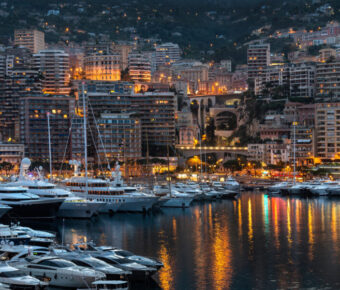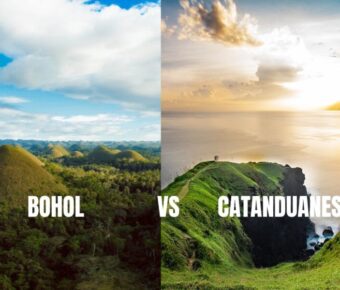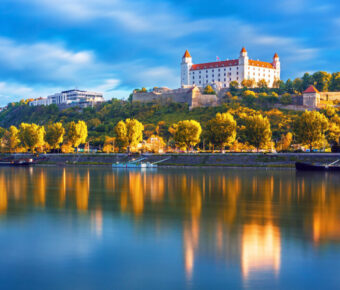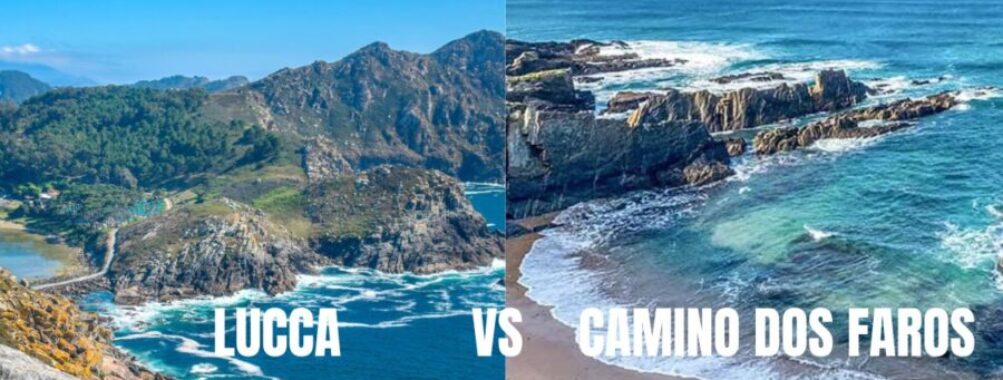
Rota Vicentina vs Camino dos Faros: Ultimate Guide to Portugal’s and Spain’s Wildest Coastal Trails
Trying to pick between Portugal’s Rota Vicentina and Spain’s Camino dos Faros? It really depends on what kind of coastal adventure you’re after.
One trail sweeps you along wild Atlantic cliffs past sleepy fishing villages and sandy tracks. The other winds through Galicia’s rugged, storm-battered shoreline, linking lighthouses and hidden coves.
Both are jaw-droppingly gorgeous, but honestly, the mood, the ground under your boots, and the local flavor couldn’t be more different once you hit the trail.
If you’re after a quieter vibe with a mix of rural scenes and dramatic coastlines, the Rota Vicentina probably suits you.
But if you’re drawn to walking beside lighthouses and craggy headlands, the Camino dos Faros will call your name.
So, what gets your heart racing—solitude and tradition, or wild, untamed coastline?
Table of Contents
- Key Takeaways
- Rota Vicentina vs Camino dos Faros: Key Differences
- Location and Regional Highlights
- Trail Structure and Waymarking
- Popularity and Accessibility
- Rota Vicentina: Overview and Unique Features
- The Historical Way
- The Fisherman’s Trail
- Circular and Connecting Routes
- Essential Stages and Destinations on Rota Vicentina
- Porto Covo to Vila Nova de Milfontes
- Vila Nova de Milfontes to Almograve
- Almograve to Zambujeira do Mar
- Zambujeira do Mar to Odeceixe
- Camino dos Faros: What Makes It Distinct
- Trail Highlights and Landscapes
- Stages and Navigation
- Wildness and Solitude
- Planning Your Adventure: Logistics and Practicalities
- Best Seasons to Walk
- Accommodation and Services
- Transport and Access Points
- Local Culture, Nature, and Experiences
- Wildlife and Natural Parks
- Local Communities and Traditions
- Surf Culture and Coastal Living
- Frequently Asked Questions
- What are the unique landscape highlights one can expect while trekking the Rota Vicentina compared to Camino dos Faros?
- Can you detail the differences in trail difficulty and accessibility between the Rota Vicentina and the Camino dos Faros?
- What are the best times of year to walk the Rota Vicentina and Camino dos Faros for optimal weather and trail conditions?
- Could you provide insights on the cultural and historical experiences offered on the Rota Vicentina versus the Camino dos Faros?
- How do accommodation options vary between the Rota Vicentina and Camino dos Faros for long-distance hikers?
- What are the logistical considerations, such as signage and support, for someone choosing between the Rota Vicentina and Camino dos Faros?
- Book Your Dream Experience
- More Travel Guides
Key Takeaways
- These two coastal trails serve up totally different hiking experiences.
- Terrain, culture, and logistics all play into which route will fit you best.
- The right trail? It’s all about the kind of adventure you want.
Rota Vicentina vs Camino dos Faros: Key Differences
Both of these long-distance routes hug the Atlantic, but the experiences don’t really overlap. One takes you through Portugal’s Alentejo and Algarve, the other traces Galicia’s fierce Costa da Morte.
You’ll see the contrasts in the landscapes, how the trails are set up, and even in how you plan your walk.
Location and Regional Highlights
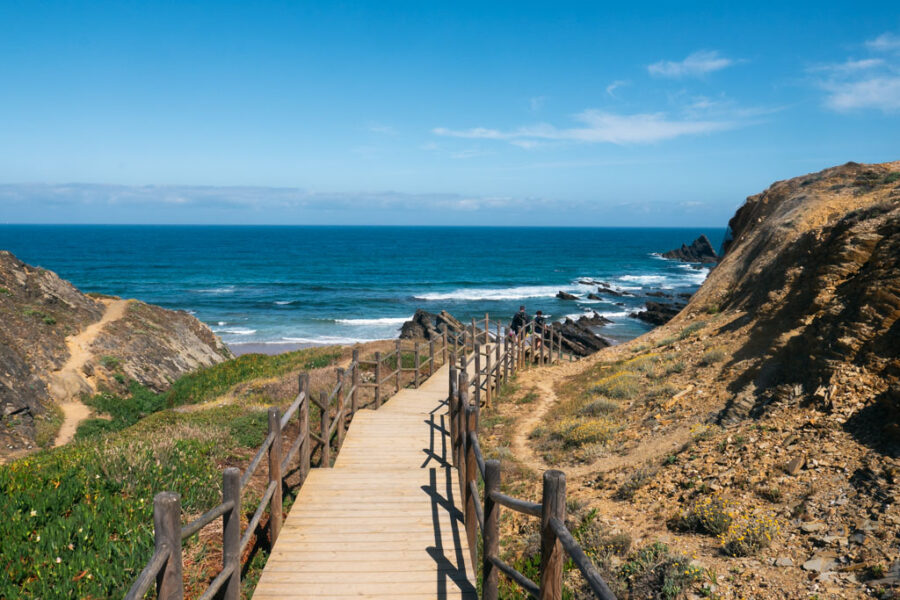
The Rota Vicentina stretches across southwest Portugal, mostly through the Alentejo and Algarve.
You’ll wander through cork oak forests, stumble into quiet villages, and march along dramatic cliffs inside Parque Natural do Sudoeste Alentejano e Costa Vicentina.
The coastline here feels wild, but the inland bits mellow things out with farmland and rolling hills.
The Camino dos Faros runs along Galicia’s Costa da Morte in northwest Spain. The name literally means “The Lighthouse Way,” and it’s not just for show.
Every stage links lighthouses, fishing villages, and rocky headlands that take a beating from Atlantic winds.
I’ve hiked parts of both, and honestly, the feeling is worlds apart. Portugal’s route moves at a slower, almost meditative pace.
Galicia’s trail? It’s harsher, more dramatic, and you’re never far from reminders of shipwrecks and storms that gave this coast its name.
If you’re a sucker for history and raw seascapes, Camino dos Faros packs a punch.
Trail Structure and Waymarking
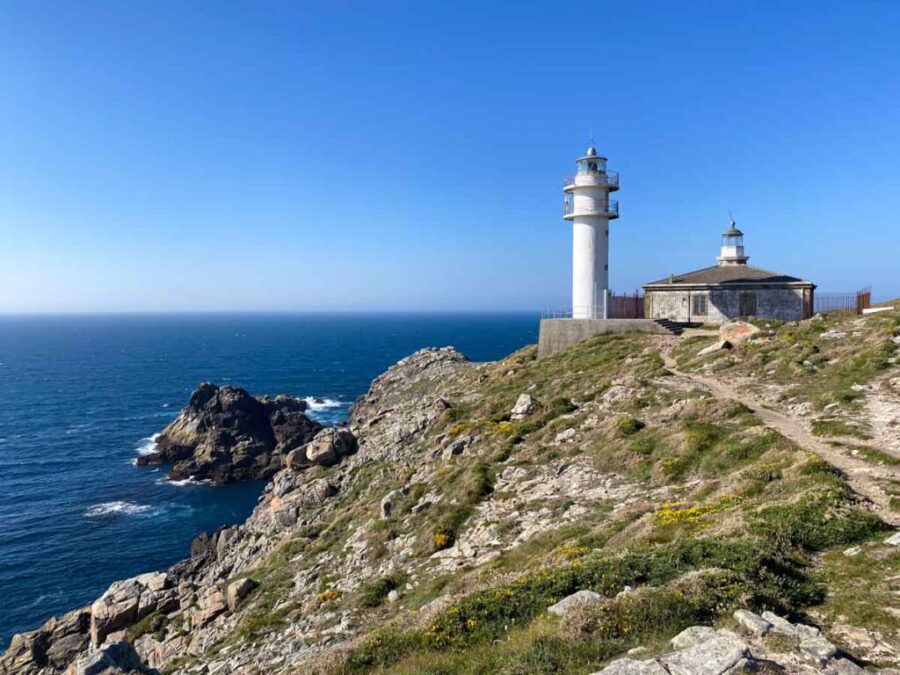
The Rota Vicentina isn’t just a single path—it’s a network. You’ve got the Historical Way and the Fishermen’s Trail.
The Historical Way heads inland through villages and it’s open to hikers and mountain bikers.
The Fishermen’s Trail hugs the cliffs and beaches, just for walkers, and those sandy paths can really work your legs.
Trail markings are clear and consistent—red-and-white blazes for the Historical Way, blue-and-green for the Fishermen’s Trail.
If you want to go big, you can even connect to the European E9 route, which is a nice bonus for die-hard trekkers.
The Camino dos Faros, in contrast, is a single 200 km route. It’s not officially a GR path yet, so the signage feels a bit homespun sometimes.
You’ll spot green arrows, and they usually do the job. Still, I found myself double-checking maps more here than in Portugal—adds a bit of uncertainty, but isn’t that kind of the point?
Popularity and Accessibility
The Rota Vicentina has really caught on lately, especially with international hikers looking for something different from the Camino de Santiago.
You’ll find plenty of guesthouses, small hotels, and even luggage transfer if you want to walk light.
Stages usually end in towns with accommodation, so planning is a breeze.
The Camino dos Faros feels less polished for tourists.
You’ll still find places to stay, but they’re more scattered. Sometimes you’ll have to organize a taxi or extra transport if you don’t want to slog through a really long day.
But hey, lighter crowds give it a more off-the-radar feel.
If you love meeting hikers from all over, Rota Vicentina makes it easy.
But if you’re after solitude and don’t mind a bit more planning, Camino dos Faros rewards you with a wilder, more authentic edge.
I still remember one night in Galicia, being the only guest in a tiny coastal inn. It felt like the whole Atlantic belonged to me.
Rota Vicentina: Overview and Unique Features
Rota Vicentina is a network of walking trails in southwest Portugal that blends rugged coastline with quiet countryside.
You get two main long-distance routes and a bunch of smaller loops, each one showing off a different side of the Alentejo and Algarve.
The Historical Way
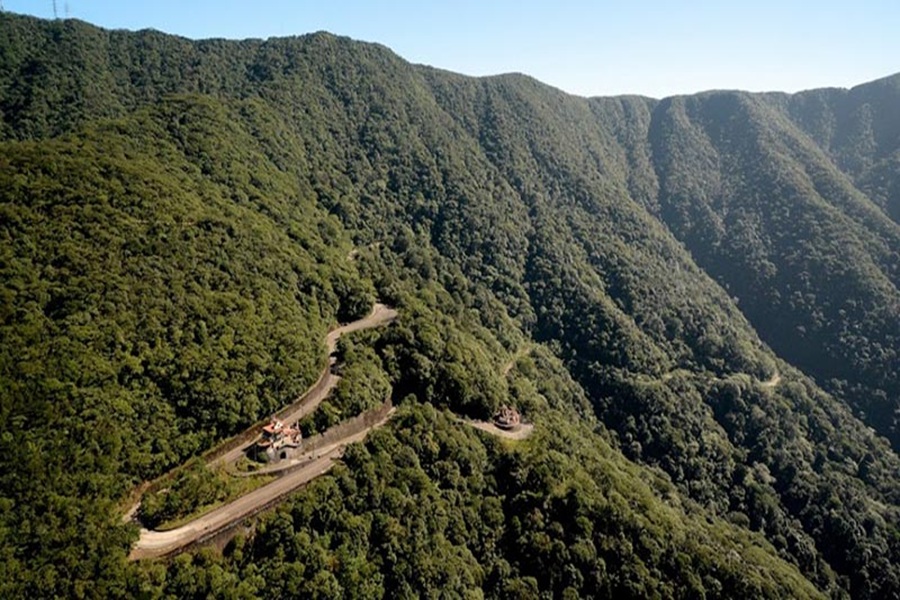
The Historical Way, or Caminho Histórico, forms the inland backbone of the Rota Vicentina.
It stretches about 230 km between Santiago do Cacém and Cabo de São Vicente, winding through cork oak forests, farmland, and tiny villages.
Unlike the coastal paths, this one feels more rural, with rolling hills and valleys that pull you deep into Portuguese countryside.
You’ll spot red-and-white waymarks—the same style as the European E9 long-distance route.
They keep you on track as you pass through places where time seems to slow down.
I remember walking near Cercal do Alentejo and stopping at a tiny café, where the owner insisted I try her homemade fig jam.
Those little moments? They’re what make the Historical Way so lovely.
The trail isn’t technically tough, but some days are long—think 18–25 km.
Each stage ends in a village with guesthouses or small hotels.
If you want a quieter walk with fewer crowds and more local flavor, this one’s for you.
The Fisherman’s Trail
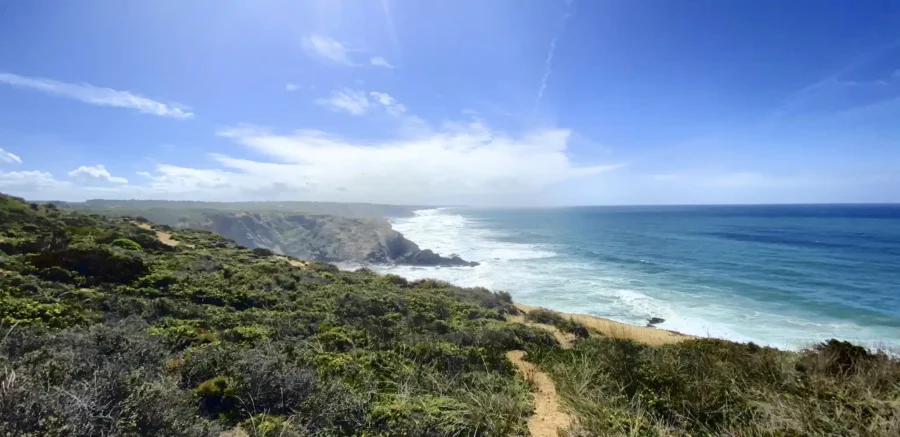
The Fisherman’s Trail, or Trilho dos Pescadores, is the coastal showstopper of the Rota Vicentina.
It runs from Porto Covo down to Odeceixe, hugging cliffs, sandy coves, and wild beaches.
You’ll spot storks nesting on sea stacks and hear the Atlantic pounding below your feet.
The path is marked in blue and green, and it’s a whole different beast from the Historical Way.
You’ll walk mostly on sand and clifftops—tough on the legs, but the views are worth every step.
I still remember the stage from Almograve to Zambujeira do Mar—22 km of dramatic cliffs and winds that nearly knocked me over, but honestly, I’d do it again in a heartbeat.
It’s easy to find accommodation in fishing villages along the way.
Just keep in mind, camping isn’t allowed on the trail itself.
If you’re craving raw ocean views and don’t care about a little sand in your boots, this one’s a winner.
Circular and Connecting Routes
Besides the two main trails, Rota Vicentina has a bunch of circular and connecting routes.
These shorter walks loop through farmland, rivers, and coastal viewpoints, often starting and ending in the same town.
They’re perfect if you’re short on time but still want to get a feel for the region.
For instance, near Vila do Bispo, you can take a loop that mixes inland valleys with a cliffside stretch over the Atlantic.
These routes also connect the Historical Way to the Fisherman’s Trail, so you can mix things up.
I’ve done this a few times—some days I wanted the quiet of the countryside, other days I needed the crash of the waves.
Most loops run 5 to 16 km, so they’re great for half-day walks.
They’re also a solid option in the hotter months when a short hike is all you can manage.
If you’re traveling with family or just easing into long-distance hiking, these routes give you plenty of flexibility without missing out on what makes Rota Vicentina special.
Essential Stages and Destinations on Rota Vicentina
Rota Vicentina twists along Portugal’s southwest coast, blending rugged cliffs with fishing villages and sandy coves.
Each stage has its own vibe—sometimes you’re alone on a wide beach, sometimes you’re weaving through farmland, or tucking into grilled fish in a tiny seaside town.
Porto Covo to Vila Nova de Milfontes
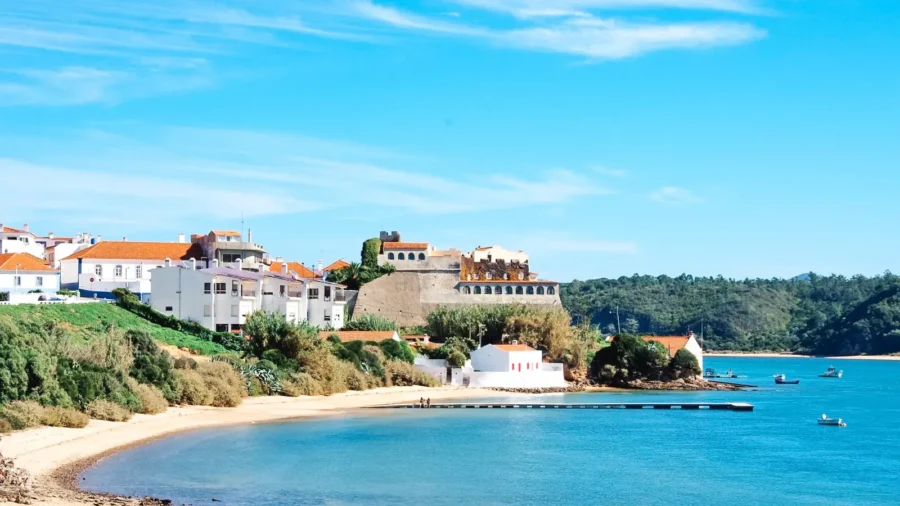
Starting in Porto Covo, you’ll hike past long stretches of sand and dramatic cliffs.
The trail here is sandy and can be a slog, but the Atlantic views make up for it.
I kept stopping just to watch the waves crash below.
This stage is about 20 km, setting the tone for the Fishermen’s Trail.
You’ll pass Praia do Malhão, one of the Alentejo coast’s wildest beaches.
Pack snacks and water—there’s not much until you reach Vila Nova de Milfontes.
Once you arrive, you’ll find plenty of small restaurants serving up fresh seafood.
The town sits on the Mira River, making it a scenic spot to wrap up the day.
It’s a good place to take a breather, especially if you want a blend of beach and small-town life.
Vila Nova de Milfontes to Almograve
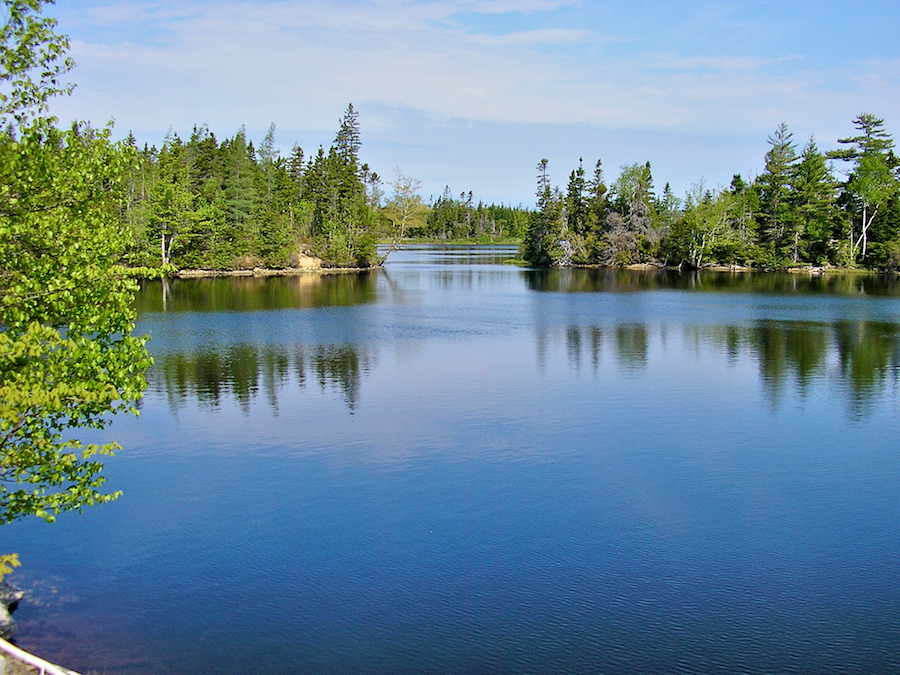
This stage is shorter—around 15 km—but memorable because you cross the Mira River.
Some folks take the ferry, others walk inland to cross the bridge.
Honestly, the ferry’s the way to go—quick, cheap, and a fun start to the morning.
The path hugs the coastline again, with dunes and low cliffs.
You’ll notice the scenery shifting here, with more farmland and little fields.
It’s definitely quieter than the day before.
Almograve is a small village, more laid-back than Vila Nova de Milfontes.
There’s a beach nearby with striking red cliffs—a perfect spot for a late swim.
If you like things low-key, you’ll feel at home here.
Almograve to Zambujeira do Mar
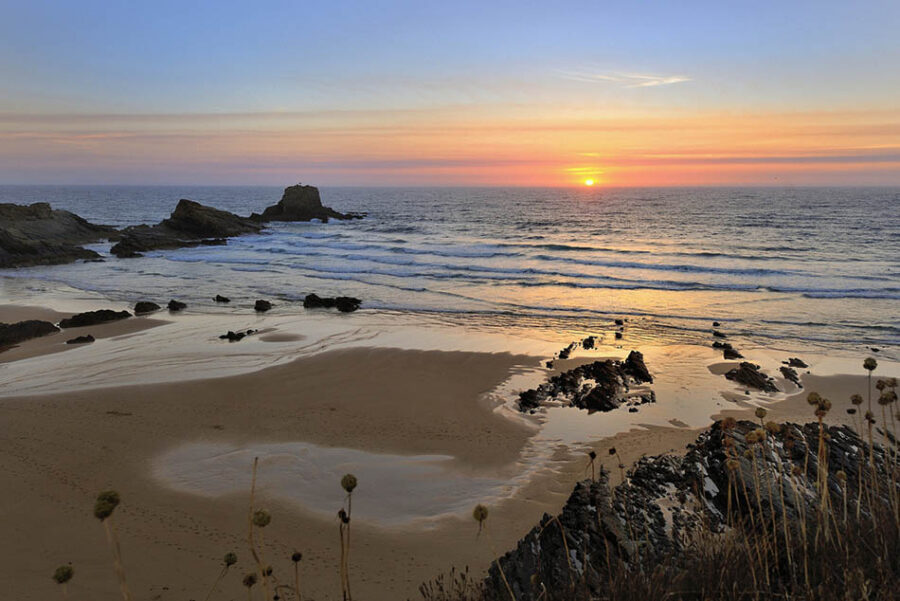
This stretch is about 22 km and feels longer thanks to the sandy ground.
You’ll pass Cabo Sardão, a headland famous for its lighthouse and stork nests.
It’s one of the few places in the world where storks nest on sea cliffs.
I couldn’t help but stop and just watch them for a while.
The trail keeps close to the rugged coastline, with plenty of coves and scenic lookouts.
Don’t rush—there are too many good places to pause and soak it all in.
Zambujeira do Mar is a charming seaside village with whitewashed houses and a beach right below the cliffs.
If you time it right, grab seafood at a cliffside restaurant.
The sunset here is unreal—probably my favorite on the route.
Zambujeira do Mar to Odeceixe
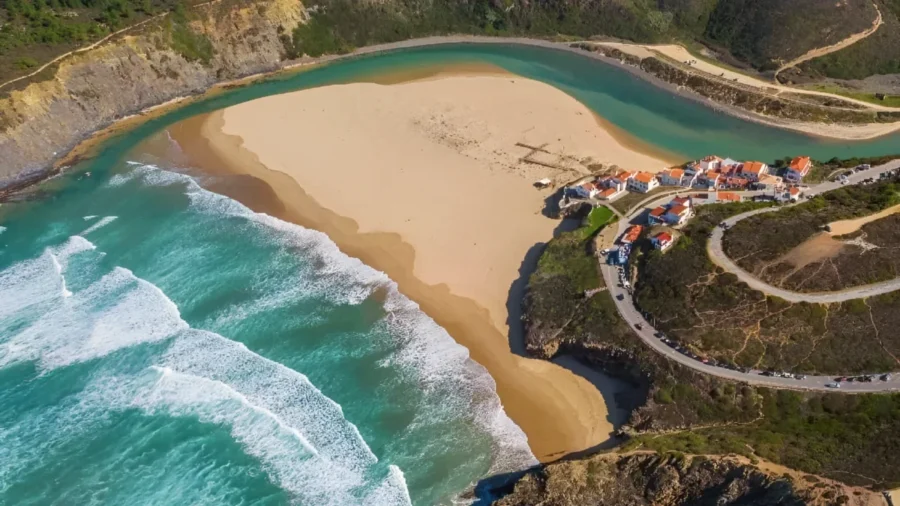
The last stage into Odeceixe is about 18 km and crosses into the Algarve region.
You’ll see the landscape change again—still cliffs and beaches, but the colors and light shift.
The trail passes by Carvalhal and Machados beaches, both quiet and beautiful.
The final stretch into Odeceixe is something special.
The village sits on a hill above the Seixe River, with the beach just a short walk away.
The first time I saw the river mouth opening to the sea, I just stood there, grinning like an idiot. It felt like a real reward after the walk.
Odeceixe is small but lively, with a handful of cozy guesthouses and restaurants.
It’s a natural place to stop before deciding if you want to keep going south toward Arrifana, Carrapateira, and eventually Cabo de São Vicente, the dramatic cape near Sagres at the edge of the continent.
Camino dos Faros: What Makes It Distinct
This coastal camino in Galicia feels raw and untamed compared to most walking trails in Europe.
You’ll spend your days hugging the Atlantic, weaving between lighthouses, fishing villages, and headlands where the sea is always just a glance away.
Trail Highlights and Landscapes
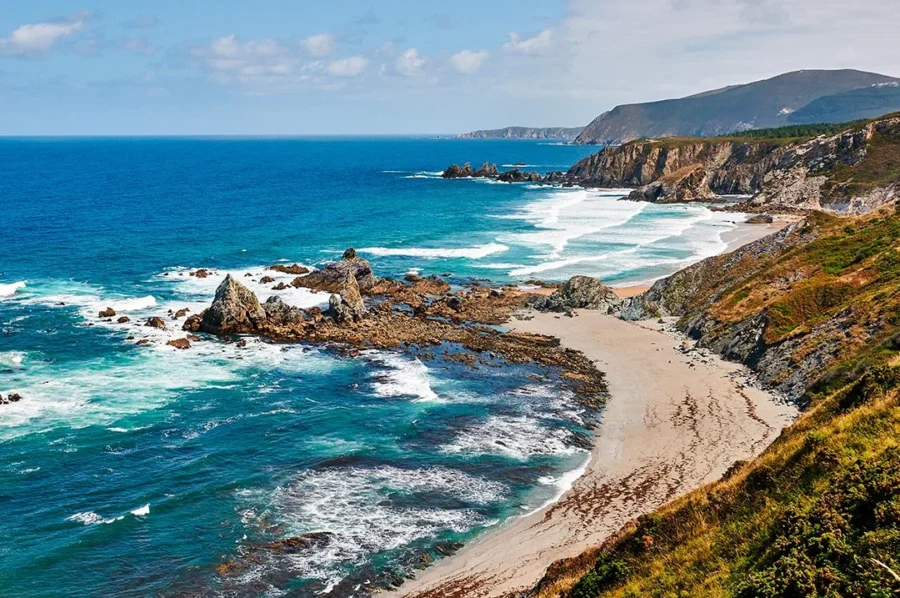
The Camino dos Faros sprawls for about 200 km along Spain’s wild Costa da Morte, connecting Malpica with Finisterre. Unlike those inland routes, this one clings to the coast the entire way.
You’ll wander past beaches, dunes, estuaries, and cliffs that seem to leap right out of the sea. The scenery just keeps shifting. One minute you’re shaded by pine forest; the next, you’re hopping over boulders with the surf at your feet.
I can’t forget pausing on a lonely headland, gulls wheeling overhead, and realizing I hadn’t seen another hiker all morning. That kind of solitude? It’s rare and honestly, a little magical.
You’ll stumble across ancient hill forts, dolmens, and fishing harbors that still feel untouched by time. If you crave variety and want a camino with a rough-around-the-edges vibe, this trail totally delivers.
The path breaks down into 8 stages, each roughly 20–25 km. No gentle strolls here—most days, you’ll log 7 to 9 hours on your feet. The terrain mixes it up: sand, rocks, and plenty of steep climbs and descents. All told, you’ll rack up nearly 4,000 meters of elevation gain.
Waymarking is decent, but don’t expect a mindless yellow-arrow-following experience like the Camino de Santiago. I kept a GPS track handy and checked signs more than I’d like to admit, especially near villages where the trail splits.
Accommodation options are a bit thin compared to more popular routes. It pays to plan your overnights. Still, you’ll usually find a guesthouse or casa rural at each stage. Food is no-nonsense—seafood, bread, and a handful of simple taverns to refuel.
Wildness and Solitude
If solitude is what you’re after, this camino has it in spades. The Costa da Morte is rugged and pretty empty, so you can walk for hours without seeing another soul.
Sometimes, all you hear are waves smashing the rocks and the wind rushing through the grass. The wildness here also brings challenges. The trail isn’t pampered for hikers—it’s steep, rough, and wide open to Atlantic gusts.
But honestly, that’s what makes it addictive. You’re not just following a marked path; you’re moving through a coastline that feels alive and unpredictable.
The Camino dos Faros doesn’t draw crowds or camaraderie. Instead, it’s about the raw Atlantic, stage-by-stage lighthouses, and the quiet thrill of covering ground that still feels untamed.
Planning Your Adventure: Logistics and Practicalities
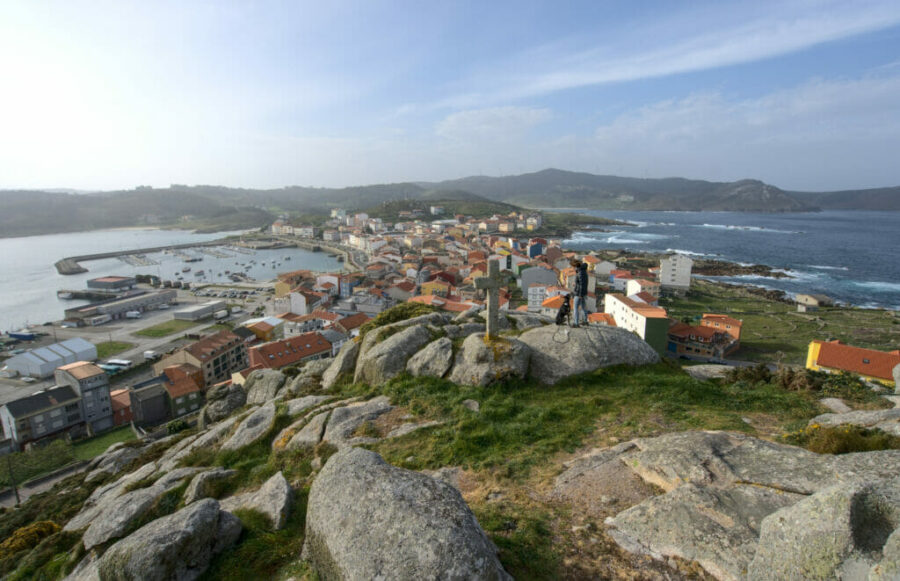
If you’re eyeing the Rota Vicentina or the Camino dos Faros, a little planning goes a long way. Weather, services, and access can make or break your walk, so it’s worth getting a lay of the land before you lace up your boots.
Best Seasons to Walk
Spring and autumn hit the sweet spot for both trails. On the Rota Vicentina, April to June means mild temps and wildflowers all over the Alentejo. Autumn, especially September and October, cools things off and thins the crowds along the Algarve.
The Camino dos Faros in Galicia works best May through early October. Winters are wild and stormy—trust me, the “Costa da Morte” isn’t an idle nickname. Summer’s warm but manageable thanks to the Atlantic breeze.
If you’re planning either trail, steer clear of July and August unless you’re fine with higher prices and packed beaches. Good shoes, layers, and lightweight travel gear will save your feet and sanity.
Accommodation and Services
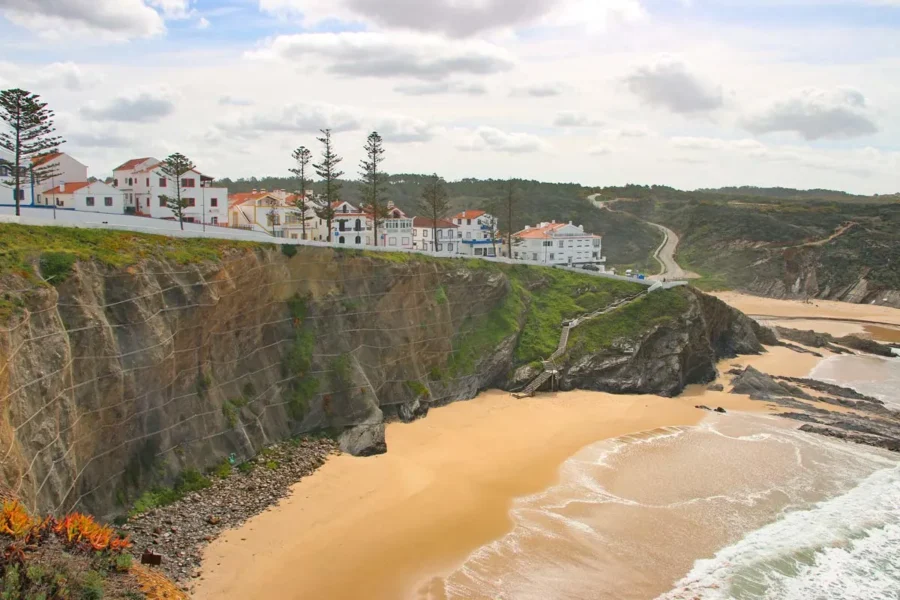
The Rota Vicentina offers a pretty wide range of places to stay, especially along the Fishermen’s Trail. You’ll find guesthouses, rural B&Bs, and the odd hostel. Prices are all over the map, but in touristy spots like Lagos or Porto Covo, booking ahead is just smart. Most options can be grabbed through Booking.com.
On the Camino dos Faros, accommodation is more scarce. Expect small pensions, family-run hotels, and the occasional albergue. The vibe is less touristy, so don’t expect a menu of choices every night. Some walkers even call a taxi to reach nearby towns for better options.
Food’s usually easy to find, but rural Galicia keeps odd hours. I always carry snacks, just in case. Portugal’s more reliable for restaurant hours, and inland towns serve up affordable set menus.
Transport and Access Points
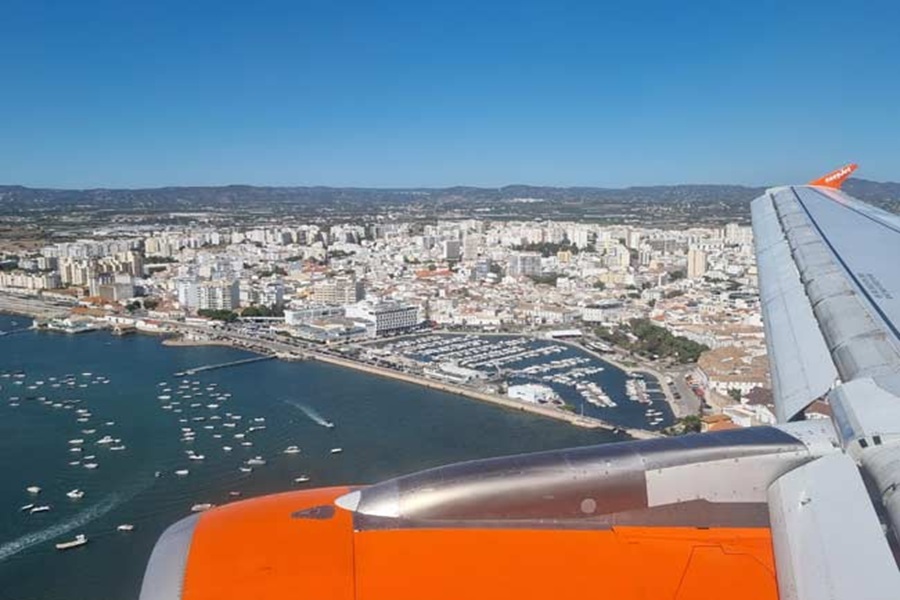
Getting to the trailhead is pretty straightforward if you plan ahead. For the Rota Vicentina, most folks fly into Faro Airport. From there, buses and trains connect you to towns like Santiago do Cacém or Porto Covo, depending on your chosen route.
The Camino dos Faros usually kicks off in Malpica, Galicia. The closest big airport is A Coruña, but Santiago de Compostela works too. Buses link the cities to the coast, though schedules can be a bit thin.
If you’re juggling flights, hotels, and cars, I’d check KAYAK for deals. Renting a car is handy if you’re short on time, especially in Galicia where public transport can be patchy.
Both trails let you walk in either direction, so you can tweak the route to fit your travel plans. Sometimes, just getting to the trailhead is the real adventure.
Local Culture, Nature, and Experiences
Walking these trails isn’t just about the views—you’ll drop right into the daily rhythm of Portugal’s coast and Spain’s wild Galicia. The contrast between untouched parks, fishing villages, and surf towns keeps things interesting.
Wildlife and Natural Parks
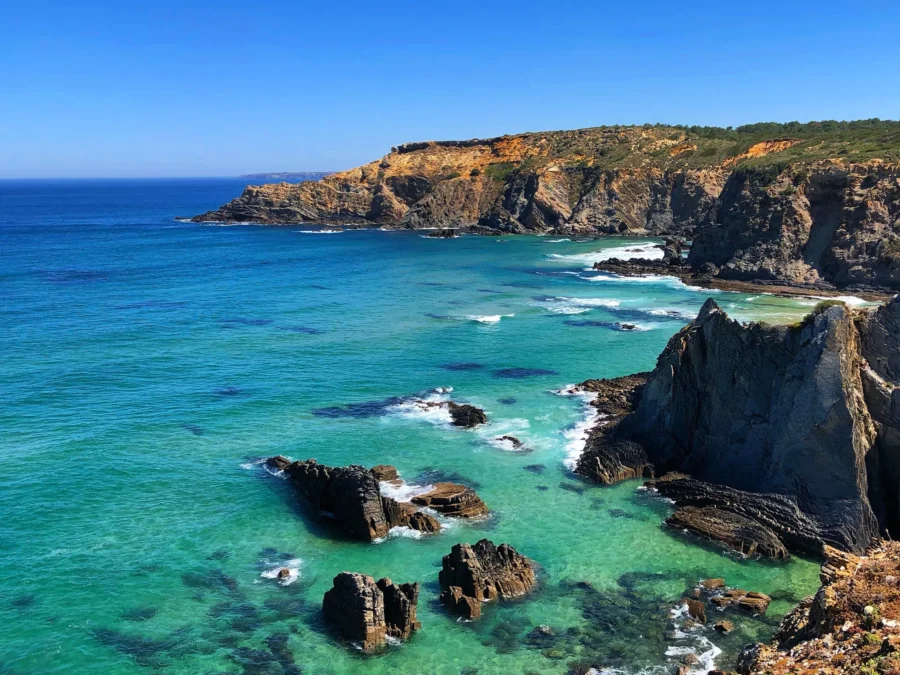
On the Rota Vicentina, you’ll spend days inside the Vicentine Coast Natural Park—cliffs plunging into the Atlantic, storks nesting on sea stacks. It’s one of the few places in Europe where you’ll catch that. Spring brings wildflowers everywhere, and autumn is prime for bird migrations.
The Camino dos Faros leans into that raw Atlantic wilderness. Rocky headlands, pine forests, tidal estuaries—shellfish harvesting is still just part of the daily grind here. The coastline feels harsher, with wild weather that can flip your plans in a heartbeat.
If you’re into nature, you can tack on guided hikes or day trips through booked tours. Honestly, it’s a good way to see corners you’d otherwise miss.
Local Communities and Traditions
On the Rota Vicentina, you’ll meet farming families and fishermen who still work the land and sea. Villages like Odeceixe or Aljezur move at their own pace, with whitewashed houses and tiny cafés where locals linger. Meals focus on what’s fresh and simple—grilled sardines, bread stews, that sort of thing.
The Camino dos Faros has its own rhythm. Fishing towns like Malpica or Camariñas are all about seafood and lace-making. You’ll hear Galician spoken—a language close to Portuguese—and notice the pride in local traditions. Festivals tied to the sea, like Virgen del Carmen, bring the whole town out.
Both trails remind you that walking isn’t just about scenery—it’s about being welcomed, even if just for a moment, into everyday life. If you want to dive deeper, you’ll find local cooking classes or craft workshops through travel activities.
Surf Culture and Coastal Living
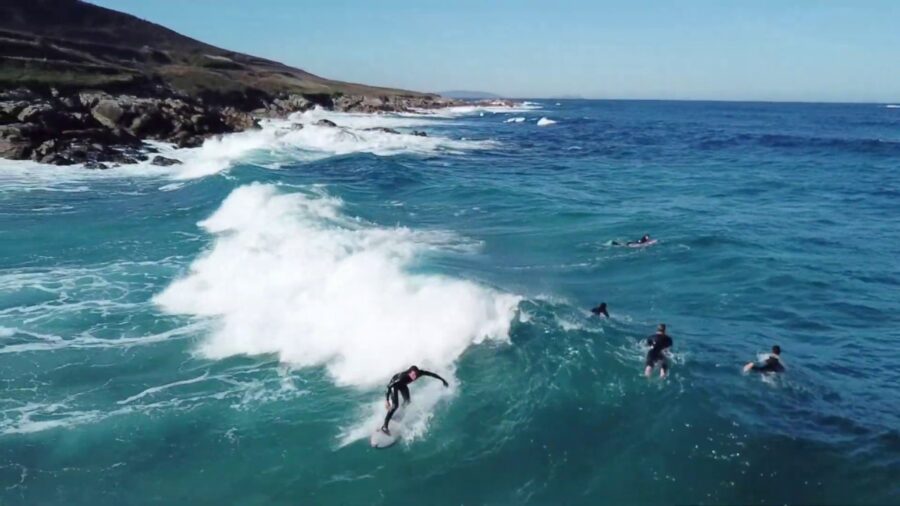
Life here revolves around the ocean, and you’ll feel it everywhere. On the Rota Vicentina, especially around Arrifana or Carrapateira, surfers set the pace. Beaches double as hangouts, with surf schools and laid-back bars. It’s tempting to swap boots for a board, honestly.
The Camino dos Faros coastline is wilder and less commercial. You’ll spot surfers in Laxe, but the vibe is quieter. Fishing comes first—nets drying on the docks, boats heading out at sunrise, seafood markets buzzing.
Both trails give you a taste of coastal living that’s inseparable from the sea. Whether it’s surfboards stacked in the Algarve or fishermen mending nets in Galicia, the ocean isn’t just a backdrop—it’s life.
Frequently Asked Questions
When you’re weighing these two trails, you’ll notice differences in scenery, terrain, culture, and support. Each route has its own beat, shaped by the land and the people who call it home.
What are the unique landscape highlights one can expect while trekking the Rota Vicentina compared to Camino dos Faros?
On the Rota Vicentina, you’ll log plenty of miles on sandy coastal tracks, especially along the Fishermen’s Trail. Expect cliffs, storks, and huge Atlantic views. The inland Historical Way brings cork oak forests, valleys, and old villages into the mix.
The Camino dos Faros in Galicia feels wilder and less polished. It hugs the Costa da Morte, with lighthouses, rocky headlands, and hidden coves. The Atlantic is rougher here, and the coastline feels raw—fishing hamlets haven’t changed much in decades.
Can you detail the differences in trail difficulty and accessibility between the Rota Vicentina and the Camino dos Faros?
The Rota Vicentina is well-marked and suits walkers of various levels. Sandy stretches can be tiring, but the stages are shorter and easy to break up. Accessibility is solid, with lots of entry and exit points.
The Camino dos Faros is tougher. The path stays rocky, uneven, and often steep. You’ll want sturdy shoes and a bit of grit. It’s not really an “intro trail”—more for hikers who don’t mind a challenge and can roll with things not being perfectly mapped out.
What are the best times of year to walk the Rota Vicentina and Camino dos Faros for optimal weather and trail conditions?
For the Rota Vicentina, spring (March to May) hits the mark. Wildflowers pop up everywhere, the weather’s pleasant, and it’s not too hot. Autumn works too, with fewer people and cooler days.
The Camino dos Faros is best in late spring or early autumn. Summer gets hot and exposed on the cliffs, while winter brings storms. I walked a section in late September—warm days, cool evenings, just about perfect.
Could you provide insights on the cultural and historical experiences offered on the Rota Vicentina versus the Camino dos Faros?
The Rota Vicentina winds through rural Portugal, where you’ll see cork harvesting, whitewashed villages, and small farms. It’s more about traditional countryside life than grand monuments.
The Camino dos Faros tells a maritime story—lighthouses, shipwrecks, fishing traditions. Galicia’s identity runs deep here. You’ll also pass ancient petroglyphs and stone crosses, adding a layer of history you don’t really find in southern Portugal.
How do accommodation options vary between the Rota Vicentina and Camino dos Faros for long-distance hikers?
On the Rota Vicentina, you’ll stumble upon a surprisingly solid mix of guesthouses, cozy little hotels, and those charming rural stays that feel like a hug after a long day. Most villages along this trail have grown pretty familiar with hikers, so unless you’re traveling smack in the middle of peak season, grabbing a bed isn’t usually a hassle.
Now, Camino dos Faros? That’s a different story. You won’t find as many spots to crash right on the path, so a bit of forward planning—or even arranging transfers—becomes your new best friend. Still, when you finally land somewhere, it’s often a family-run place with loads of character, and honestly, that personal touch makes the whole experience feel way more memorable.
What are the logistical considerations, such as signage and support, for someone choosing between the Rota Vicentina and Camino dos Faros?
The Rota Vicentina really spoils you with its trail markings—you can’t miss them. They’ve even put together an official help guide that lists services like luggage transfers, guided walks, and a bunch of local partners.
I love that it’s set up for independent walkers who still want a bit of a safety net. It just feels easy to relax and focus on the scenery, knowing there’s backup if you need it.
Now, Camino dos Faros is a different beast. The signage exists, sure, but it’s rougher around the edges. You’ll need to watch those waymarks closely and, honestly, sometimes you’re just better off firing up the GPS.
There’s not much in the way of formal support, so you’ve got to be more self-sufficient. It’s definitely more adventurous—maybe even a little wild at times. If you’re not prepared, it can be less forgiving, but that’s part of the thrill, isn’t it?
